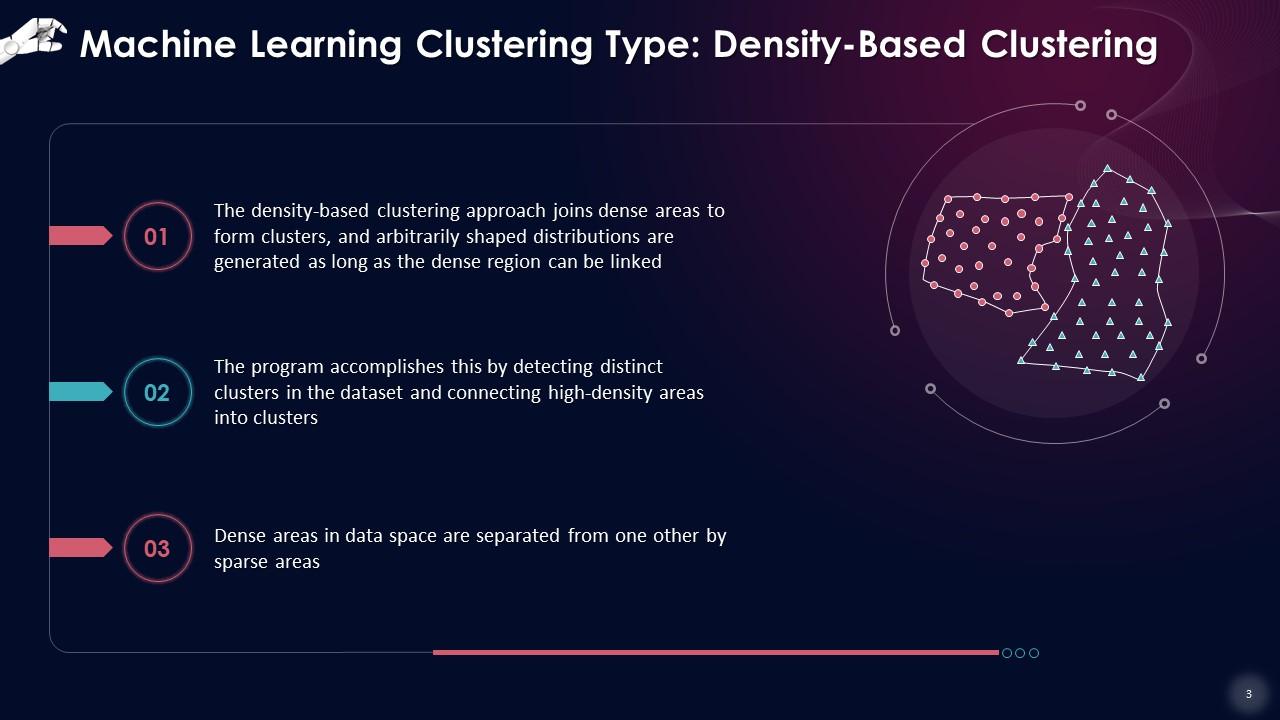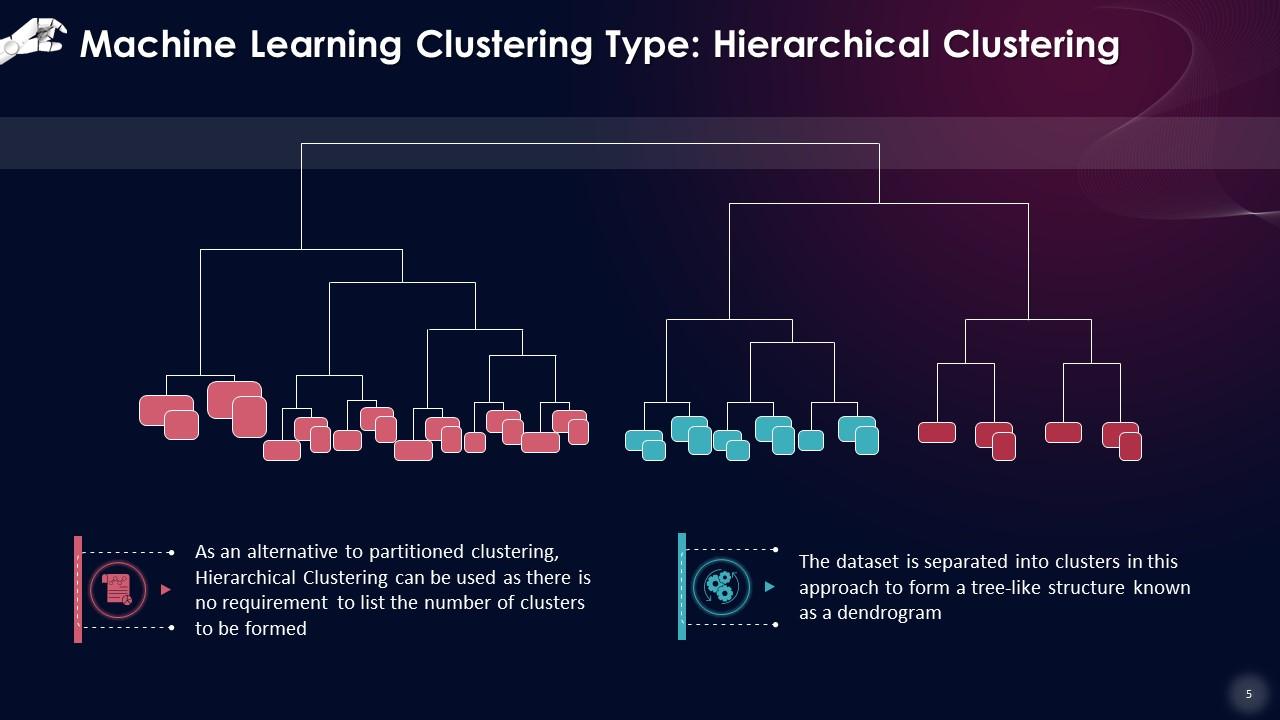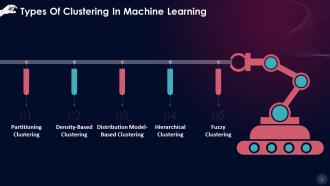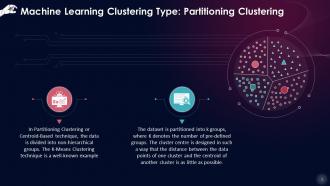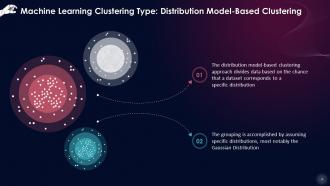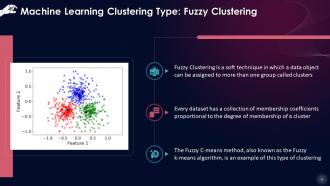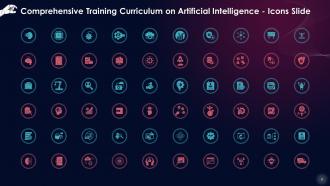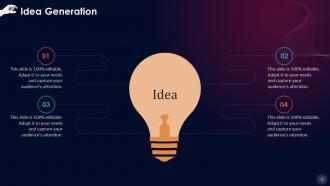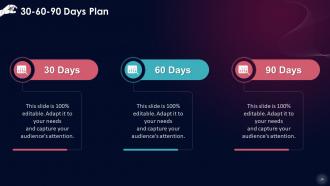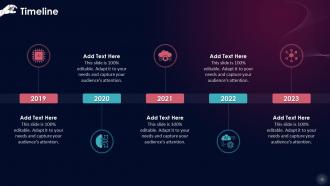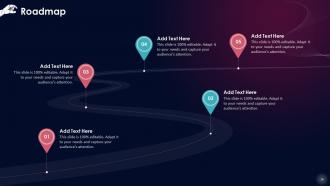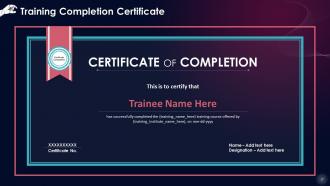Types Of Clustering In Machine Learning Training Ppt
These slides provide information about types of clustering techniques. These are Partitioning Clustering, Density-Based Clustering, Distribution Model-Based Clustering, Hierarchical Clustering, and Fuzzy Clustering.
You must be logged in to download this presentation.
 Impress your
Impress your audience
Editable
of Time
PowerPoint presentation slides
Presenting Types of Clustering in Machine Learning. These slides are 100 percent made in PowerPoint and are compatible with all screen types and monitors. They also support Google Slides. Premium Customer Support available. Suitable for use by managers, employees, and organizations. These slides are easily customizable. You can edit the color, text, icon, and font size to suit your requirements.
People who downloaded this PowerPoint presentation also viewed the following :
Content of this Powerpoint Presentation
Slide 1
This slide lists that there are a variety of Clustering techniques available. The following are the most common clustering approaches used in Machine Learning: Partitioning Clustering, Density-Based Clustering, Distribution Model-Based Clustering, Hierarchical Clustering and Fuzzy Clustering.
Slide 2
This slide illustrates that the data is divided into non-hierarchical groups in Partitioning Clustering or Centroid-Based technique. The K-Means Clustering technique is a well-known example. The dataset is partitioned into K groups, where K denotes the number of pre-defined groups. The cluster center is designed in such a way that the distance between the data points of one cluster and the centroid of another cluster is as little as possible.
Slide 3
This slide states that the density-based clustering approach joins dense areas to form clusters, and arbitrarily shaped distributions are generated as long as the dense region can be linked. The program accomplishes this by detecting distinct clusters in the dataset and connecting high-density areas into clusters.
Instructor Notes: If the dataset has high density and multiple dimensions, these algorithms may struggle to cluster the data points.
Slide 4
This slide explains that the distribution model-based clustering approach divides data based on the chance that a dataset corresponds to a specific distribution. The grouping is accomplished by assuming specific distributions, most notably the Gaussian Distribution.
Instructor Notes: The Expectation-Maximization Clustering method, which employs Gaussian Mixture Models, is an example of this kind (GMM) of clustering.
Slide 5
This slide showcases that as an alternative to partitioned clustering, Hierarchical Clustering can be used as there is no requirement to list the number of clusters to be formed. The dataset is separated into clusters to form a tree-like structure known as a dendrogram.
Slide 6
This slide states that Fuzzy Clustering is a soft technique in which a data object can be assigned to more than one group called clusters. Every dataset has a collection of membership coefficients proportional to the degree of membership of a cluster.
Types Of Clustering In Machine Learning Training Ppt with all 22 slides:
Use our Types Of Clustering In Machine Learning Training Ppt to effectively help you save your valuable time. They are readymade to fit into any presentation structure.
-
The slides come with appealing color schemes and relevant content that helped me deliver a stunning presentation without any hassle!
-
The best collection of PPT templates!! Totally worth the money.




